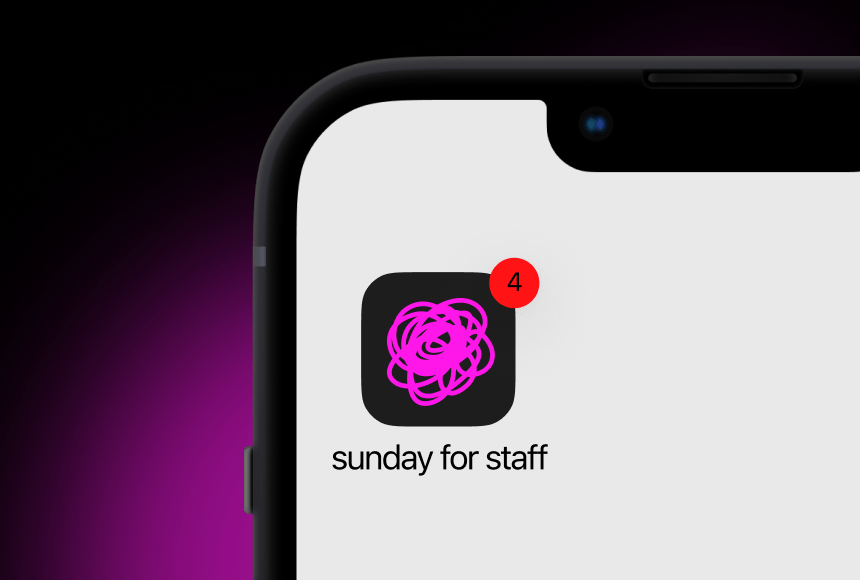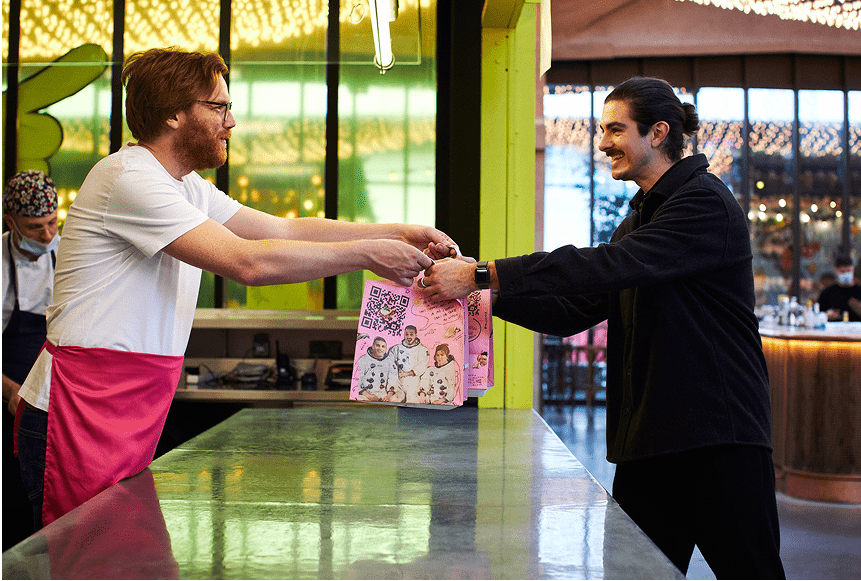
How Your Restaurant’s Payment Experience Shapes Online Feedback
The Power of a Seamless Checkout
Imagine you own a bustling bistro in the heart of London. Diners arrive full of anticipation, lured in by mouth-watering aromas and impeccable décor. Everything seems to be going well—until it’s time to settle the bill. Suddenly, a queue forms, the payment terminal takes too long to connect, and your staff have to dart between tables to manage transactions. No matter how remarkable the meal, this last hurdle can leave diners feeling frustrated. Once they walk out, chances are they’ll head straight for online review platforms to voice their experience.
In today’s hyperconnected world, your diners’ feedback carries immense weight. According to a 2023 survey by BrightLocal, nearly 98% of consumers read online reviews for local businesses. For restaurants in particular, these reviews often focus less on the flavour of the gnocchi and more on the all-round dining experience—which includes the checkout process. It might sound surprising, but the speed, clarity, and convenience of your payment procedure plays a significant role in how customers remember (and rate) their meal. A slow or confusing checkout can overshadow an otherwise delightful experience.
This article explores how your online reviews reflect your restaurant’s checkout process, why it matters, and how you can adjust your payment methods to lead to better online feedback. We’ll look at industry practices, share relevant data, and offer practical tips to help you streamline that final moment of your guest experience. Get ready to serve up a payment process that leaves your customers raving in all the right ways.
Linking Online Reviews to the Payment Process
Most restaurant owners are well aware of how a single negative review can reverberate through their business. But it can be eye-opening to realise just how often that negativity stems from checkout friction rather than the food or service. From waiting too long for the card machine to having an unclear tipping system, even small irritations can fuel negative commentary.
Here’s why your final payment experience is so critical:
- It’s the last personal interaction: Leaving a striking impression at this stage can either reinforce positive feelings or dampen the entire experience.
- It involves financial trust: Payment is about money. If guests feel insecure or are forced to wait, trust can evaporate within seconds.
- It’s often the moment for feedback requests: Many restaurants include a prompt to rate or review them online. How you handle that request, and how smooth the payment is, may influence whether customers follow through—and what star rating they choose.
In short, the relationship between your payment process and online reviews is much tighter than most restaurant owners suspect. An extra three minutes spent fiddling with a device in front of hungry diners waiting for the next seating can add a sour note to what was up until then a wonderful meal. With diners increasingly turning to platforms like Google Reviews or TripAdvisor, the details of how you handle payment now carry significant weight in shaping your public image.
Key Elements That Influence Payment Satisfaction
Transforming your checkout from a hassle into a hospitality highlight involves more than simply upgrading your hardware. Below are some major contributors to a smooth and impressive payment process:
1) Speed and Efficiency
If guests must wait for your staff to return with a card machine or face a slow network connection, their patience might run out. In the UK, where contactless payments are quite popular, most customers expect a quick tap-and-go experience. Long downtime leads to irritation, which can seep into reviews.
2) Simplicity and Transparency
Complicated steps or hidden charges can create distrust. For example, if your diners have to ask twice whether a service charge is automatically added or if the tip is included, it can feel awkward and lead to confusion. A straightforward, transparent checkout ensures honesty, which converts into positive online feedback.
3) Clear Tipping Methods
In many British restaurants, tipping is a delicate subject. Some diners prefer to add a gratuity via contactless, while others want to leave cash on the table. Offering multiple tipping options—and making that process crystal clear—shows respect for a range of guest preferences. If customers feel uneasy about how tips are handled, it can generate negative remarks online.
4) Personalised Communication
As you’re finalising the bill, a friendly word, a short “Thank you for dining with us,” or a polite mention of follow-up feedback opportunities can elevate customers’ perception of your establishment’s warmth. Robotic or rushed goodbyes can sour the overall memory, but a personalised farewell leaves diners feeling genuinely appreciated.
Mitigating Negative Feedback Through Better Checkout
No one wants to see a string of low-star reviews pointing out a slow or confusing payment experience. Since online reviews are likely to remain a major factor in restaurant success, the best approach is to tackle the root cause: an outdated or clumsy checkout process. Below are a few targeted strategies to address potential pitfalls before they harm your online reputation.
- Invest in intuitive technology: Payment terminals should be fast, reliable, and user-friendly. Whether you’re using traditional card machines or more advanced mobile payment apps like sunday’s QR code-based system, make sure you pick a solution that cuts down waiting time and eliminates guesswork.
- Train your staff thoroughly: Well-trained employees can spot problems early, respond quickly, and guide guests through their payment options with confidence. Proper training also helps staff recommend additional services, such as loyalty programmes or special events, with a professional touch.
- Offer multiple payment choices: Whether it’s contactless cards, mobile wallets, or standard chip-and-PIN, choice matters. Some diners still prefer the tactile reassurance of a physical card machine, while others are excited to scan a QR code at their own pace. Catering to everyone’s preference can defuse friction in that final moment.
- Set up a feedback prompt: If your system allows, prompt customers to leave a quick comment or rating immediately after payment. This can contain potential negative feedback before it goes public, giving you a chance to address minor issues in real time.
Best Practices for Crafting a Stress-Free Payment Experience
Now, let’s focus on turning your checkout into a highlight of the meal rather than its downfall. Remember, your ultimate goal is to encourage diners to leave the kind of five-star reviews that get new customers streaming through your door. Below is a set of best practices you can implement right away:
Over-Communicate, Then Simplify
Give your customers all the information they need without overwhelming them. For instance, let them know upfront in the menu if a service charge is automatically included. Place a subtle mention that they’re free to leave an optional tip if they wish. You want clarity at every stage—this fosters trust, and trust often leads to glowing reviews.
Dedicate a “Payment Station” Where Possible
In some restaurants—especially casual dining spots—it makes sense to have a clearly marked payment area. This reduces confusion for diners worried about tracking down the server with the card machine. It also keeps the flow of foot traffic organised. However, if your concept emphasises tableside service, ensure your staff are well-equipped to process payments swiftly.
Adopt Flexible Payment Platforms
From traditional card machines to QR code-based payments, the choice is yours. But staying stuck with a single method can alienate certain demographics—particularly younger diners who gravitate towards quick digital solutions. If you’re looking for something that cuts down friction, systems like sunday offer a QR-based approach, letting guests pay swiftly, tip easily, and even leave a Google review in a couple of taps.
Make Tipping Easy
When presented politely, many British diners are happy to leave a tip. However, making them jump through hoops to add gratuity can be off-putting. A straightforward prompt on the payment screen—one that doesn’t pressure diners but gently reminds them—is often the sweet spot. This approach can lead to bigger tips and, more importantly, better online feedback about your restaurant.
Leverage Automation for Follow-Up
Consider integrating an automated email or SMS system that sends a ‘Thank you for dining with us’ message. You might also include a direct link to your review page. This polite nudge is far more likely to yield positive reviews since it catches diners when they’re still in a good mood. Just ensure you have the proper consent to contact them.
Monitoring & Engaging with Online Feedback
Streamlining your checkout will undoubtedly enhance the quality of reviews, but you can’t just ‘set it and forget it.’ To pinpoint any lingering issues and maintain a stellar reputation, you’ll need to make active engagement a core part of your strategy. Consider the following approaches:
- Regularly check review platforms: Keep an eye on Google Reviews, TripAdvisor, and other platforms relevant to your location. Respond to any negative or constructive feedback promptly.
- Highlight positive comments: When a customer praises your efficient checkout, make sure to share that success story with your team. It’s a morale booster and encourages continued excellence.
- Listen to what’s not said: If your diners never mention checkout at all, that might be good news—it usually means it was seamless. Still, stay alert to subtle hints that could reveal an area for improvement.
- Invite further discussion offline: If a review suggests a particular error in your payment process, respond openly and offer to continue the conversation by phone or email. This shows you genuinely care about finding solutions.
Inspiring Reviews with an Elevated Payment Experience
Star ratings aren’t just luck of the draw. By intentionally refining the one aspect that often gets overlooked—the checkout—you give diners a lasting memory. Even a modest improvement, such as adding a user-friendly tipping prompt or a quick Google Review link, can significantly impact how customers rate their overall experience.
Take a scenario: Let’s say a family of four visits your restaurant after reading about your outstanding local produce and well-reviewed service. They enjoy their meal and even chat warmly with your staff, but by the time they’re ready to go, they’ve spent almost two hours in your establishment. If they face a payment delay—waiting for the card machine or re-entering the tip amount multiple times—it can mar their experience. On the other hand, a slick QR-based option that appears right on their phone might spark delight: “Look how easy this is!” That delight can quickly translate into a five-star online review and a recommendation to friends.
You can also encourage staff to mention, once bills are settled, how valuable feedback is to your establishment. Rather than pushing too hard—“Please leave us a 5-star review!”—a genuine request for honest opinions, with an easy link to the review platform, comes across as confident and authentic. When the checkout is done right, you can ride that wave of guest satisfaction into the digital space, turning a simple payment into a hallmark of your restaurant’s hospitality.
Final Thoughts on the Role of Checkout
Online reviews undoubtedly shape how potential guests view your restaurant. While cracking the code for delivering exquisite dishes and top-quality service is vital, remember that guests judge you by the entire experience—from the first greeting to the final tap of a payment terminal. An awkward or sluggish payment process might feel minor in the grand scheme, but it can have an outsized effect when diners decide how many stars to grant you online.
Focusing on a seamless payment journey doesn’t just save you from negative feedback—it can actively boost your rating, spark return visits, and encourage customers to spread the word about your establishment. By investing in user-friendly payment technologies, offering clear tipping methods, and training your team to handle finances with the same care they apply to plating dishes, you’ll be setting the stage for consistently positive reviews. Your checkout process becomes a symbol of your reliability, efficiency, and respect for the diner’s time—and that’s an impression that will follow them home, straight to their laptops and smartphones, when they pull up that review page.
Frequently Asked Questions (FAQ)
Below are some of the most common questions restaurant owners have when it comes to aligning their payment processes with better online reviews.
1) Isn’t the food more important than the checkout?
Food quality is undeniably crucial. However, research from Harvard Business School suggests that online reviews often hinge on the overall dining experience. Diners might still mention an exceptional dish, but if they had to spend ten minutes waiting to pay, that memory may overshadow the cuisine.
2) How can I encourage more positive reviews without sounding pushy?
People respond better to genuine requests. Train your staff to mention politely that you appreciate honest feedback. Provide a clear, easy way to leave reviews, for instance, a QR code that leads to a Google Reviews page or a brief SMS link. Avoid overtly insisting on a perfect star rating; authenticity often wins guests over.
3) What if my establishment is very small? Do I still need advanced payment solutions?
Even if your restaurant has a few tables, a smooth payment process can distinguish you in a crowded market. Simply ensuring a modern, user-friendly card terminal or a QR code-based checkout can eliminate potential friction. Smaller establishments may find these tools easier to roll out and maintain than larger operations.
4) My team resists new technology. Any tips?
Your staff’s comfort is just as important as your customers’. Begin by explaining how simpler and faster payment methods benefit everyone—including them. Consider running short training sessions or allow employees to practice on demonstration devices. Once they see how seamless the new system is, they’ll be on board more readily.
5) Do I need real-time feedback to improve my online reviews?
Real-time feedback can be extremely beneficial, yes. Some solutions let you send messages immediately after payment to gauge guest satisfaction. You can then address minor issues before displeased diners leave the premises. Think of it as a pre-emptive approach that reduces the likelihood of negative online reviews later.
6) Is it worth investing in email or SMS follow-ups?
If done tastefully and with the patron’s permission, email or SMS follow-ups can result in a surge of positive feedback online. Keep the message short and personal. Above all, don’t spam your guests. One polite reminder is usually all it takes to nudge happy diners into leaving that much-appreciated five-star review.
Find out more today
Drop us your details below and we’ll reach out within the next 24
Stay on top of your online reputation.
Say goodbye to bad ratings and hello to 5*s. Get to know your customers with our integrated rating & review feature, which allows you to get more reviews, better ratings and more visibility online.




